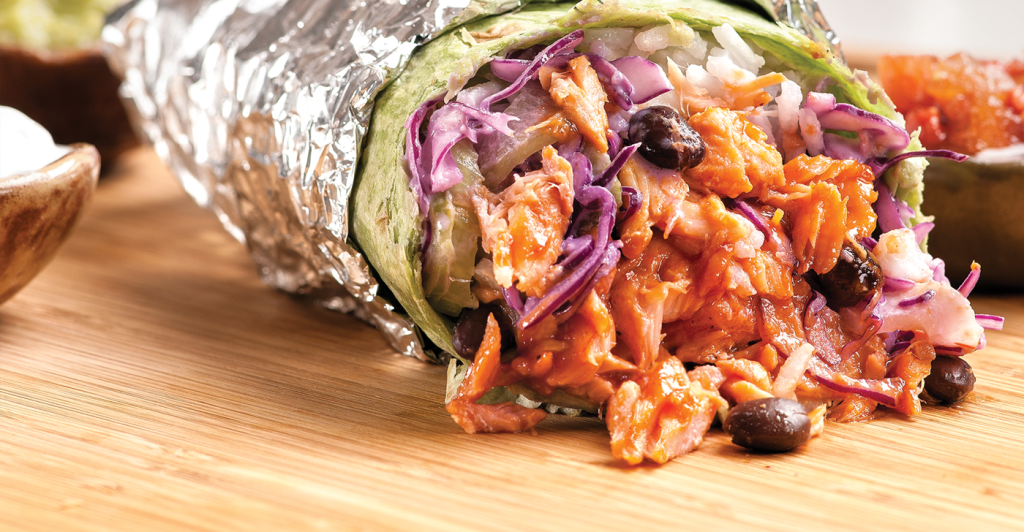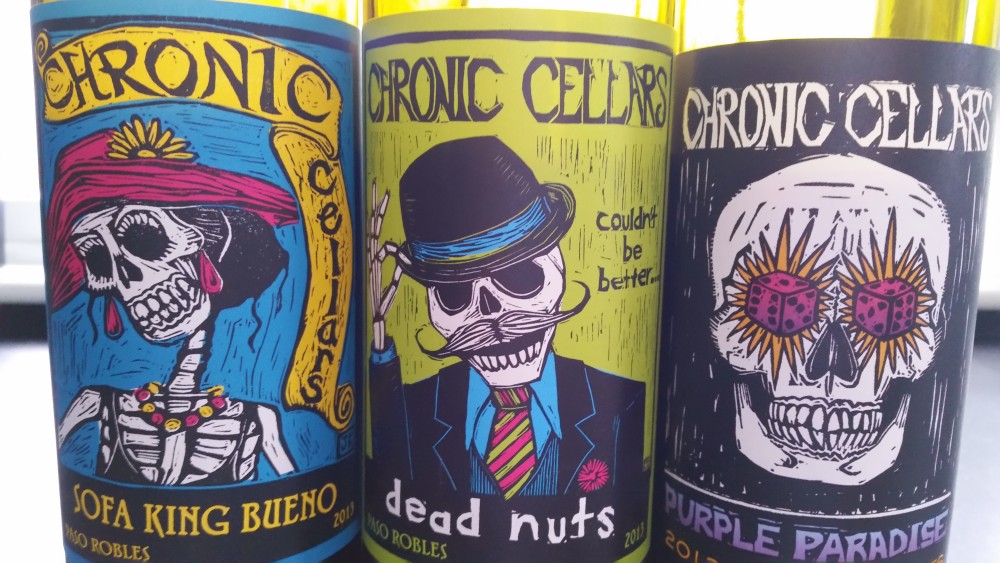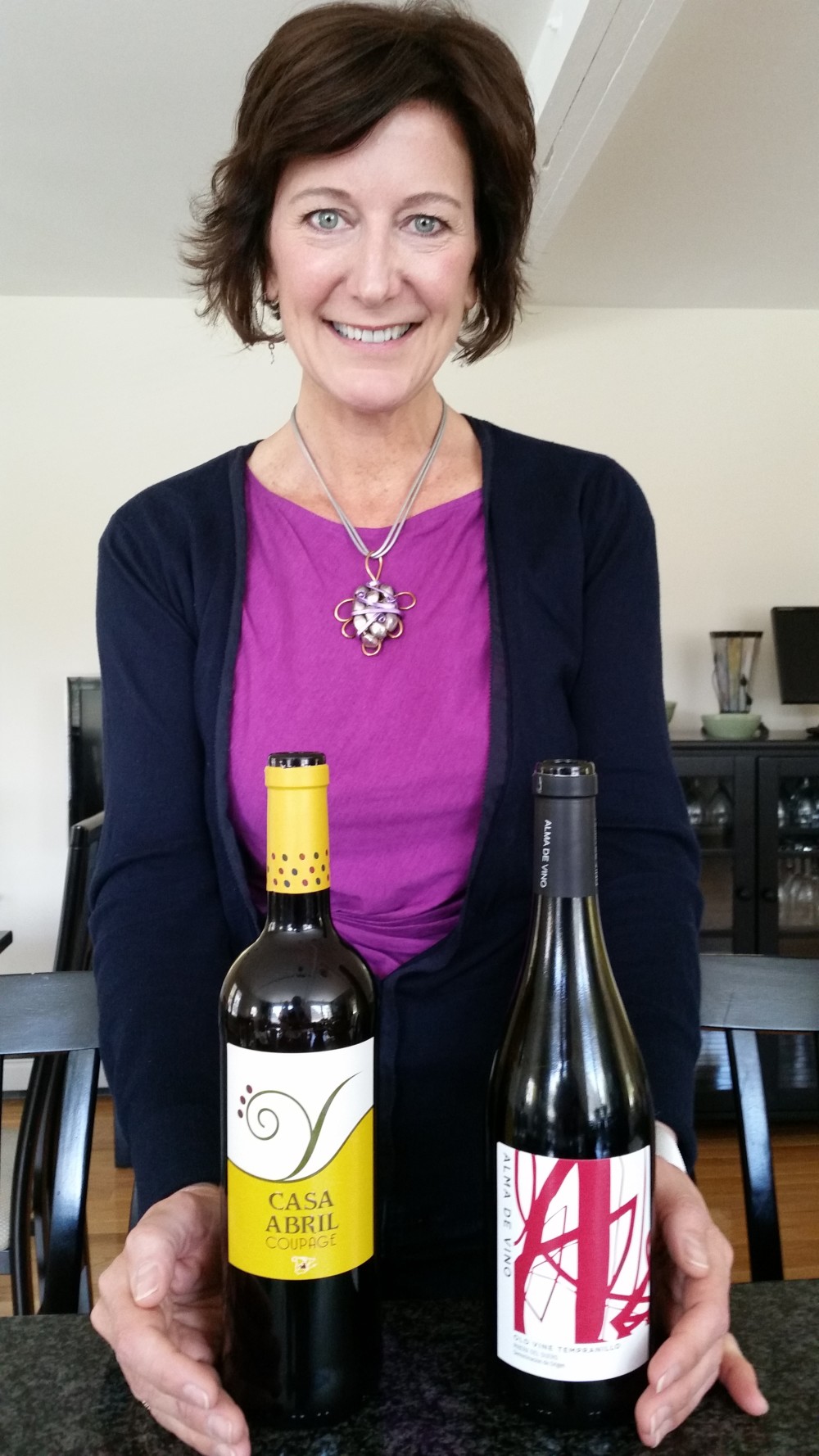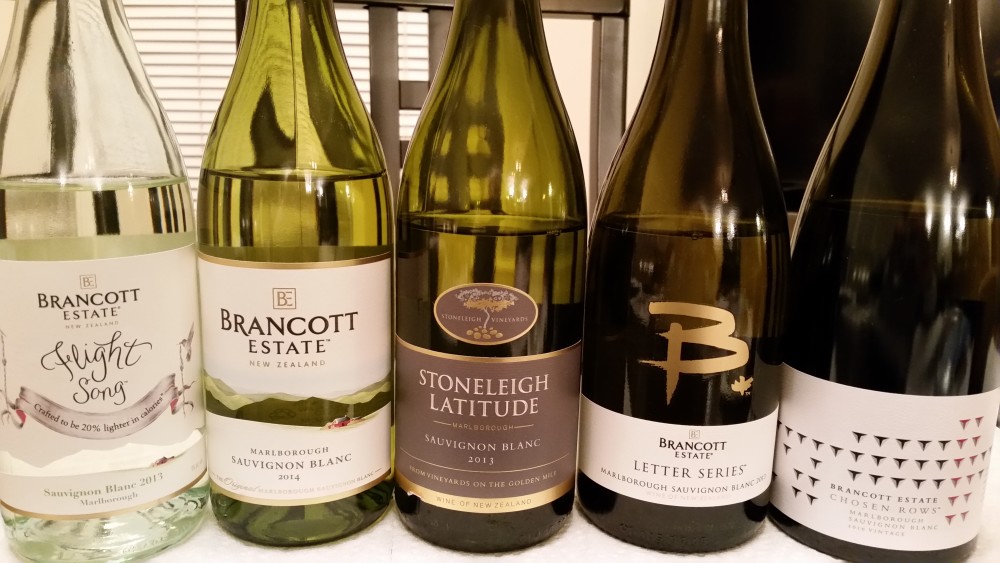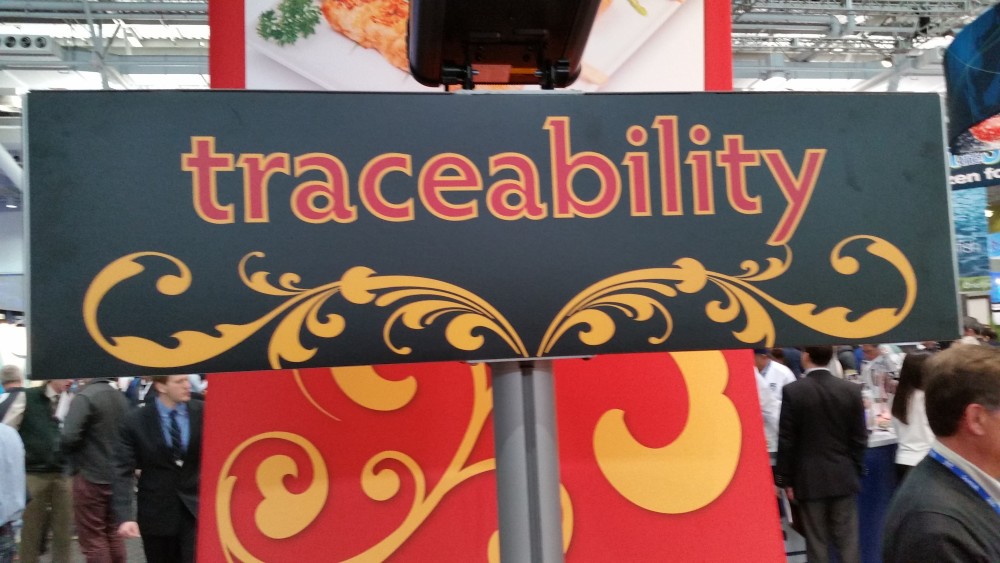Of course the main reason I wanted to try these Chronic Cellars wines is their labels. (See what I mean?)
Oh, and I wanted to see what was going on in Paso Robles, wine-wise…yeah, sure, that’s right.
Well, we had a good time sampling the wines, and I can’t say they’re spectacular, but they’re fun. I passed the remainders on to my neighbor Steve, and he and his girlfriend ended up ordering in and having an impromptu Date Night on a weekday.
We all thought the wines went better with food than without. Especially the “Dead Nuts†zinfandel-based red blend, which was the most well structured and well-made of the three. “Sofa King” (syrah-based) was the next best (which is all I can say).
But I think” Purple Paradise” (another zin-based blend) could have its uses. It would be a good wine to have if you want to introduce someone to wine, someone that was used to juice: it’s full of raspberry aromas and flavors.
These wines range from $24 to $15 MSRP.
Blog
The (Frozen) Bulleit Mint Julep
Every year I try making a Mint Julep around the time of the Kentucky Derby. And every year I realize, again, that I don’t like them. This year I went out for a Mint Julep, invited to meet Hollis Bulleit at a party she was giving for the occasion, on the patio at Boston’s Intercontinental Hotel . Normally a lovely space overlooking the Bay, on this early May afternoon it had a real Arctic wind coming in off the ocean.
By the time I got there, Hollis had retreated inside the Bulleit Woody Tailgate Trailer, where she was holding court. While I waited for my husband to get me a Mint Julep – yes I was determined to try again! – I chatted with Holllis, who told me she had been working with her father on the concept and marketing of Bulleit Bourbon since she was a teenager.
The Mint Julep showed up, I sipped it – and liked it! Huddling together to create a windblock, we drank our cocktails, then departed the frozen patio for dinner with friends. It wasn’t until I was thawing out at a warm restaurant that I realized I hadn’t asked Hollis for the recipe. Luckily I found it on the website: click HERE for the Bullet Mint Julep Recipe.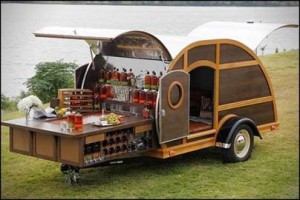
The Beginning of April…in Spanish Wine
A Junior year abroad turned into a love affair with a Spaniard then changed course and morphed into a love of Spanish wines. And all these years later, we’re standing in my kitchen sipping the first of April Cullom’s own wine label, the 2013 Casa Abril Coupage. It starts with aromas of violets and grasses, hits the palate with restrained dark fruit and departs leaving an impression of nice acidity and tannins worked in to a lengthy finish. Made with 40% Tempranillo, 40% Syrah and 20% Cabernet Sauvignon, this wine’s grapes come from vineyards near Madrid owned by April’s friends. The wine’s official designation is Vino de la Tierra de Castilla, with respectably old vines grown at around 2500 feet with no pesticides in the vineyards, and tt harvest time, it’s so hot here during the day the grapes must be picked at night.
Our second wine is made with old vine tempranillo from Ribera del Duero: the 2011 Alma de Vino. Again, winemaker Cesar Munoz is a friend of April’s. Unfiltered and unfined, the wine has a distinctly red fruit and earthy aroma, a concentration of fruit on the palate along with minerality, acidity and good, integrated tannins in the long finish.
Just to see what works, we bring out the ham and a mild cheese — Monterey Jack because we don’t have any young Manchego in the house. It all works nicely, but we are surprised to discover that the best thing about this snack is the wine’s pairing with Iggy’s Francese bread, which is made with a touch of sourdough.
Some hours after April leaves to get ready for a store tasting at Social Wine in Boston, I uncover the glasses and taste them again. Both wines have blossomed into their own individual versions of big red fruit flavors with excellent acidity and mild tannins. It’s the ending that people remember…
Celebrating #SauvingonBlancDay virtually with Brancott Estate
In honor of #SauvBlancDay, Brancott Estate brought out their chief winemaker Patrick Materman for a (virtual) tasting of five of their 100% sauvignon blanc wines. You’d think the wines would be pretty similar since they’re all from the Marlborough region of New Zealand. And that’s where you’d be wrong. The wines range from fresh & light to quite earthy & weighty.
Also, it’s interesting to note that Brancott Estate was the first to plant sauvignon blanc in Marlborough. Until Patrick said this I hadn’t really thought about it, but I guess someone had to be first: this was in 1975, with their first bottling 1979.
Tonight, first we sampled the 2013 Flight Song, a wine that is made with lower alcohol and thus fewer calories. Really. It’s got 20% fewer calories, and only 9% alcohol. Which is a good thing because it’s best sipped on its own, as an aperitif wine. It’s lively and lemon-limey, almost like grown-up soda pop. I had tried an early vintage of Flight Song and was not impressed. I recall that wine being too thin an acidic; this is a definite improvement.
Next: Brancott has been making their Estate Sauvignon Blanc since 1979, and they’ve definitely got the technique down – so far that the price has stayed down too, at around $14/bottle (though it does get discounted to an average of $12.) Elements of the traditional sharp herbal notes of a New Zealand sauv blanc are mixed with a nice chalkiness in the flavor. I can see why its popularity has endured; I would definitely look for this when I need to replenish my sauvignon blancs at home.
Another Brancott Brand is Stoneleigh, and we tasted the 2013 Stoneleigh Latitude Sauvignon Blanc, a smoky, earthy version with a medium body and more concentration than the previous wines. It felt almost savory, but with some citrus and more earth and chalkiness surrounding the lively acidity on the palate.
A few years ago Brancott began developing its prestige “Letter Series†and tonight we tasted the 2013 Sauvignon Blanc which had elements of green fruit from aroma to finish, including, winemaker Patrick said, “citrus, green olive and lemongrass.†I thought that last adjective was particularly interesting because the design of the label appears to be Asian in style. (I wonder why…)
Brancott’s prestige wine, the 2010 Brancott Estate Chosen Rows, will make it to the US in the next six months. It’s only produced every few years, when conditions are optimal in certain rows of vines in the Brancott Vineyard. Vines are pruned to yield especially low amounts of these special, hand-picked grapes. This is a savory feeling wine, much more complex than I would expect of a sauvignon blanc – and that was his goal as winemaker, Patrick related.
Seafood Trends: Crab, Salmon, Freshness
Though I mainly write about wine and spirits, I do have other interests: eating, to name one. So when the big International Seafood Expo happens in my home state, I get myself over there to eat what’s new…I mean see what’s new. New foods, new trends, new attitudes.
Shrimp and Salmon
In seafood, for the past few years salmon and shrimp have been the most popular offerings. This year, the quality of the shrimp had improved.
And salmon has become so popular that a couple booths offered salmon-like substances – and I use the word “substances†for a reason, hoping there are major improvements in this stuff before I try it again.
Salmon Farming
One factor that has made salmon so ubiquitous is the incredible growth of the farmed salmon industry. Curious about this, I went to a presentation of the International Salmon Farmers Association which was attended by ministers from several different countries such as Iceland, Norway and Canada. (Members also come from the Southern Hemisphere, including Chile and Tasmania.) Farming salmon started only 40 years ago, officially by two Norwegian brothers, though many fisherman in countries around the globe were moving in that direction. Salmon farming in the ocean has become a way for fishermen to continue their family lifestyle (often handed down from generation to generation) in the face of ever-diminishing windows and quotas for fishing.
When I asked about the future of salmon farming, I was surprised to hear that it doesn’t look as rosy as you might think. Obstacles include acceptance of the industry in local communities, and general acceptance by consumers. In addition to becoming more aware of “natural†foods, there have been negative reports about this salmon farming. The panel admitted that mistakes were made in the early days, but said that they have learned more about the importance of raising healthy fish in a clean environment. And they have been able to change the “fish in, fish out†ratio so that they are not feeding the farmed salmon as much fish protein as they used to; they claim that the ratio has gone down from 98% to as low as 25%-28%, which seemed to be the goal. (In the press room at the Expo I did notice material about soy-fed fish.) The salmon farmers are also “prospecting†for other fish they can farm.
Trending: from Crabmeat to Wellness
In addition to the improvements in shrimp (from what I tasted) and I saw less about I saw a lot more crabmeat. Most of it natural, and good. Even the surimi (“fake crabâ€) has greatly improved in texture and flavor in recent years.
Also, in the sections devoted to seafood processing I noticed more consciousness of a move to get fresh food to people more easily and quickly. There were booths for “Traceability†and pesticide testing. When a friend told me about iPura I went on their website and found they are looked like a consumer advocate with prominently displayed pages on Food Safety, Health & Wellness and Sustainability. Shipping, logistics and packaging companies seemed to also be part of this movement.
The Favorite Wine Pairing at the International Seafood Expo
Why would a wine writer go to a seafood show? Probably because wine and fish go together really well, and not just because I had a craving for seafood that day…I think. Anyhow, while there, I decided to ask all the private chefs I ran into for their personal wine-pairings.
Pinot grigio seems to be the go-to wine for chefs working at the International Seafood Expo this year. Maybe it’s because pinot grigio is a wine that is pretty popular in the US, in general. I like to think that discerning palates notice that there’s the right amount of body, flavor and liveliness in a top pinot girgio to pair with delicate seafood and firm fish.
I had a lot of fun tasting the foods and talking with the overworked-but-kindly chefs on the Expo floor who were turning out hundreds of samples per hour for the (clearly starving) seafood professionals who roamed the show. There were pinot grigio-loving chefs at many of the booths including Ducktrap River, Alaskan Jack’s and Authentic Maryland Crab Cake Secret. But then I ran into Chef Owen Tilley at High Liner Foods who recommended a white Rioja with recipes like his seafood empanadas and award-winning pulled bbq salmon: excellent choice, Chef.
